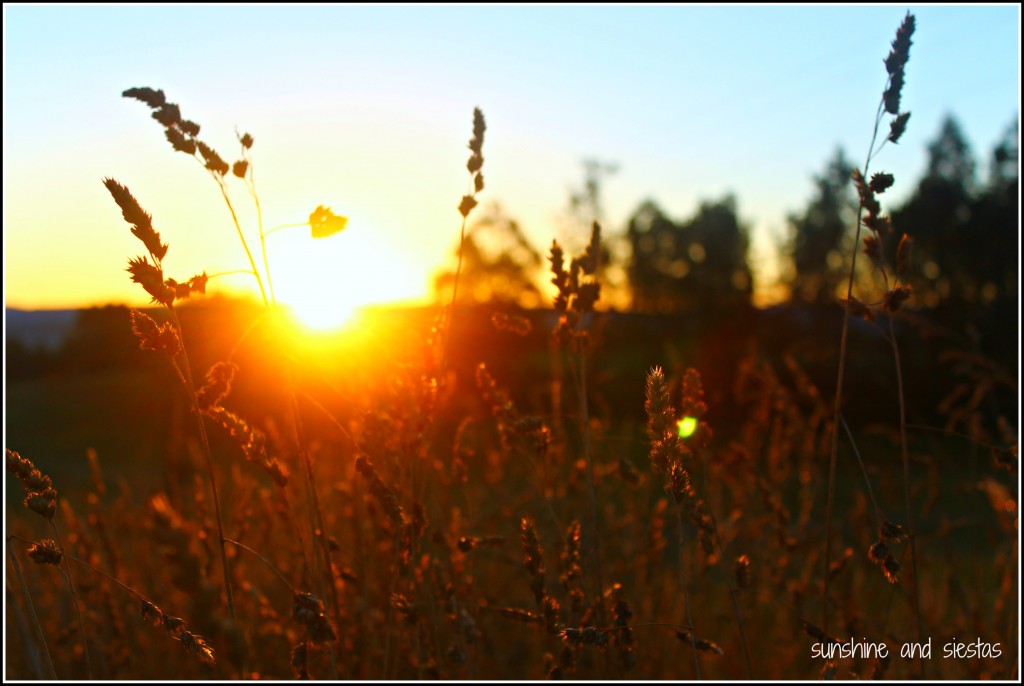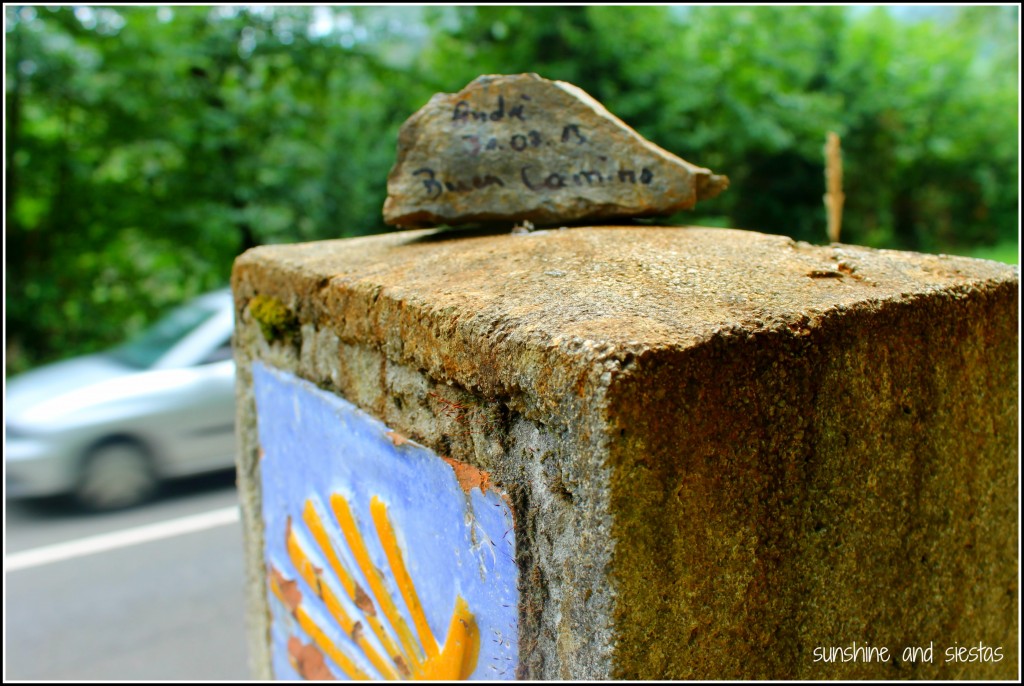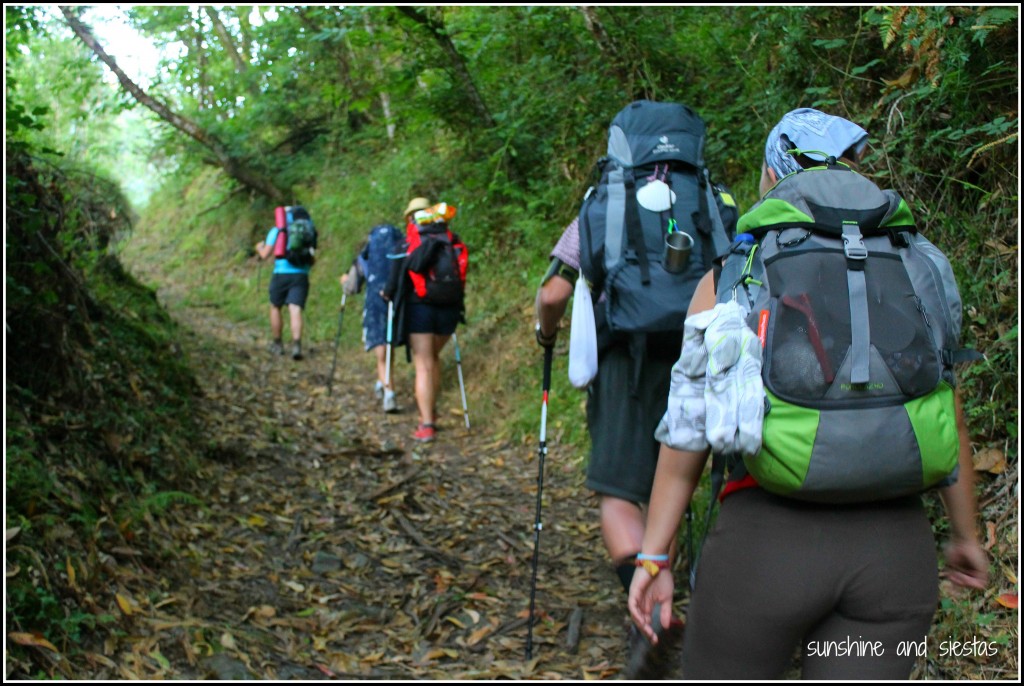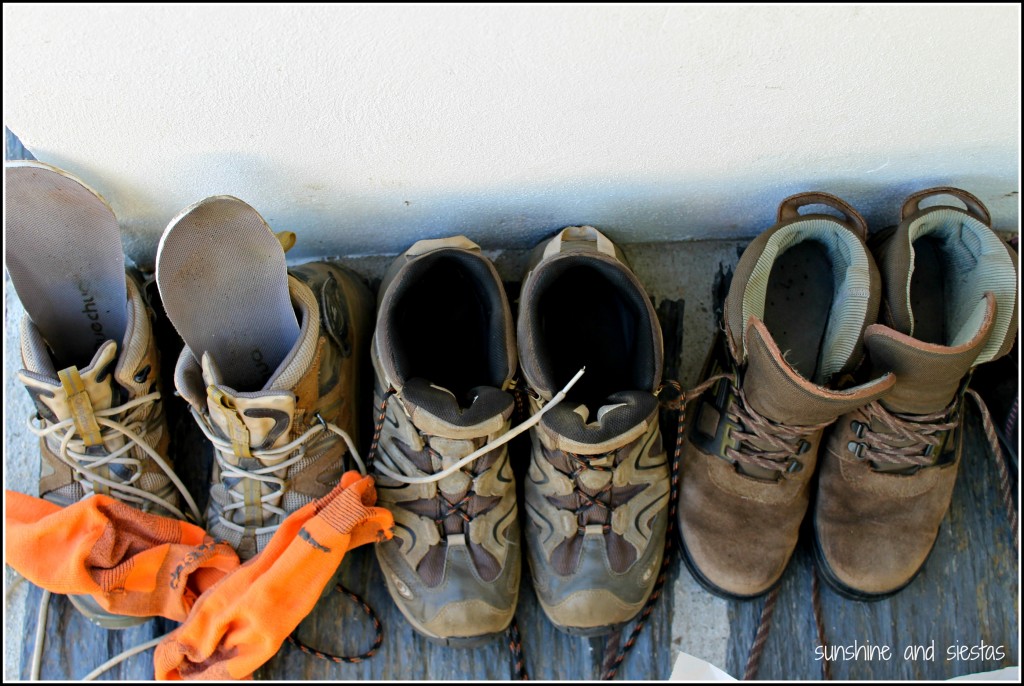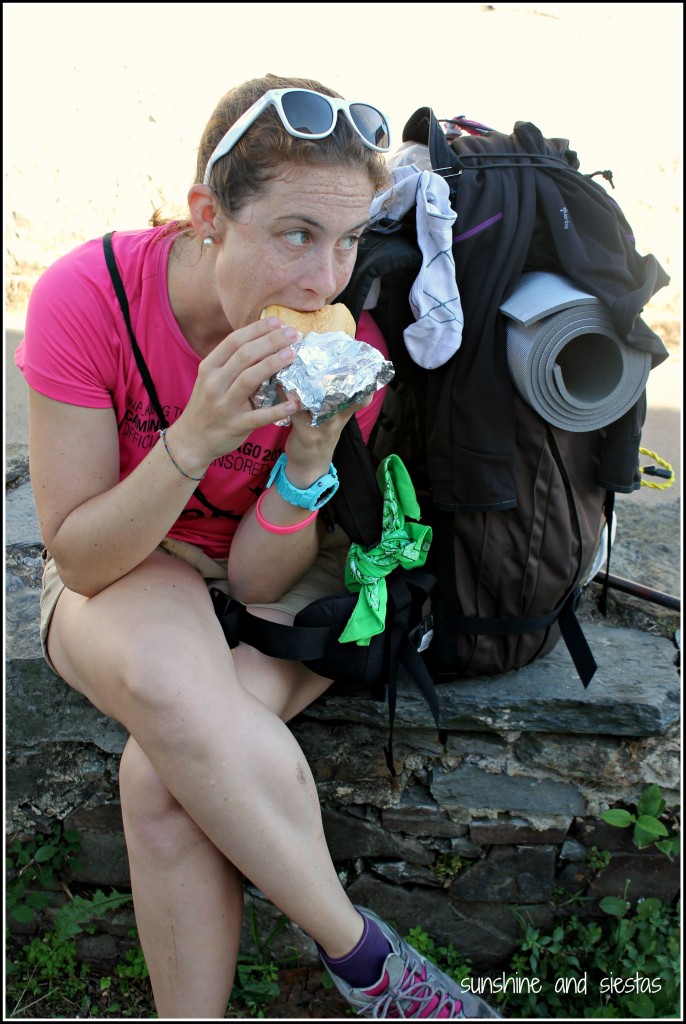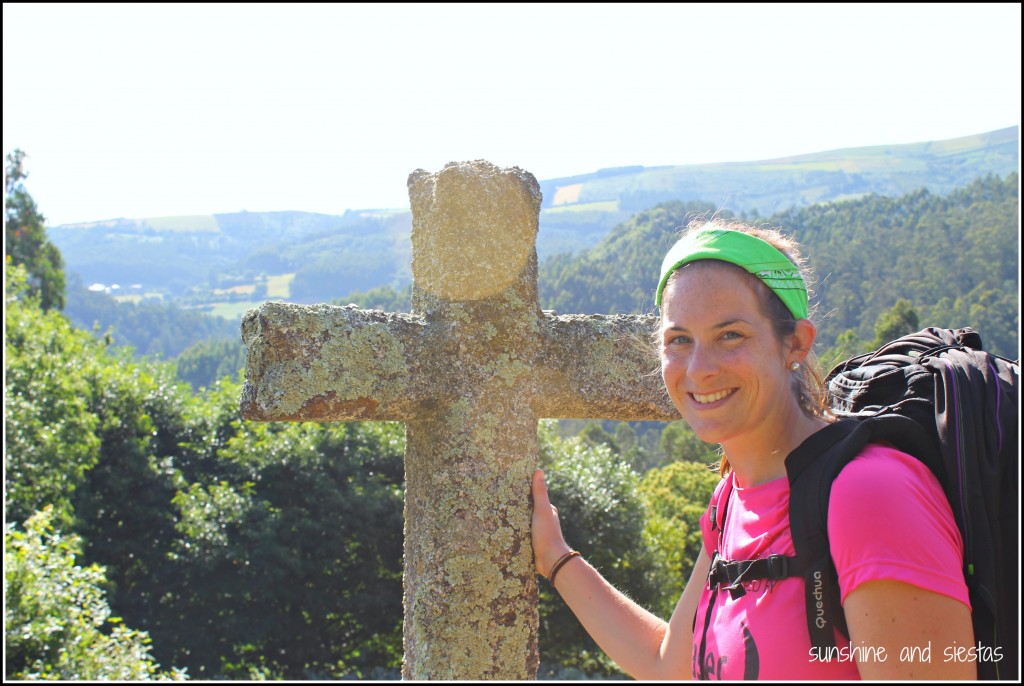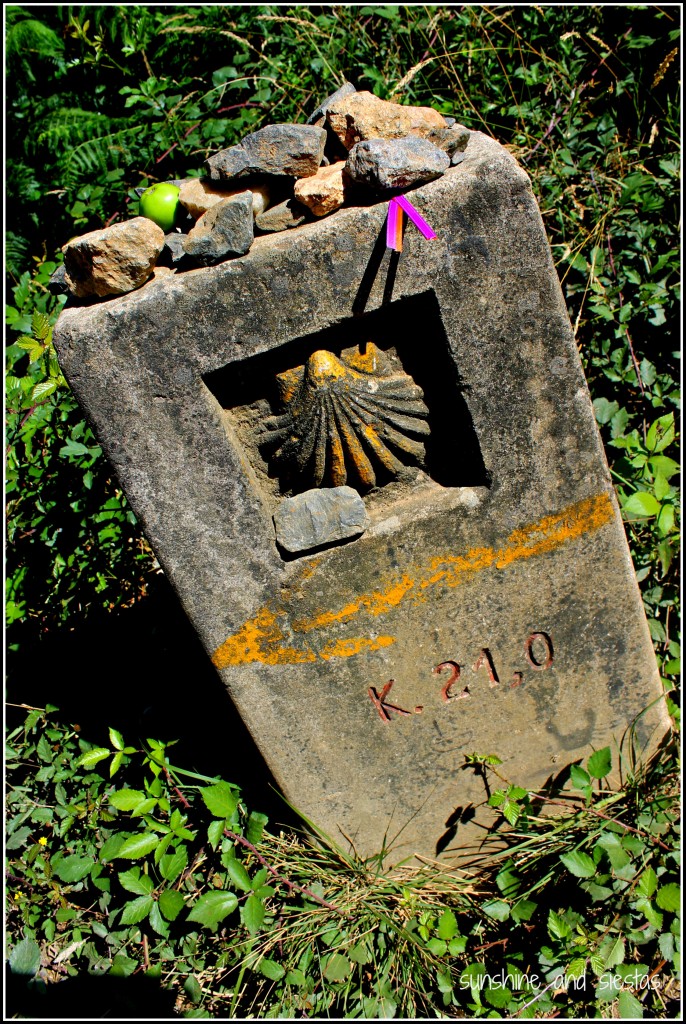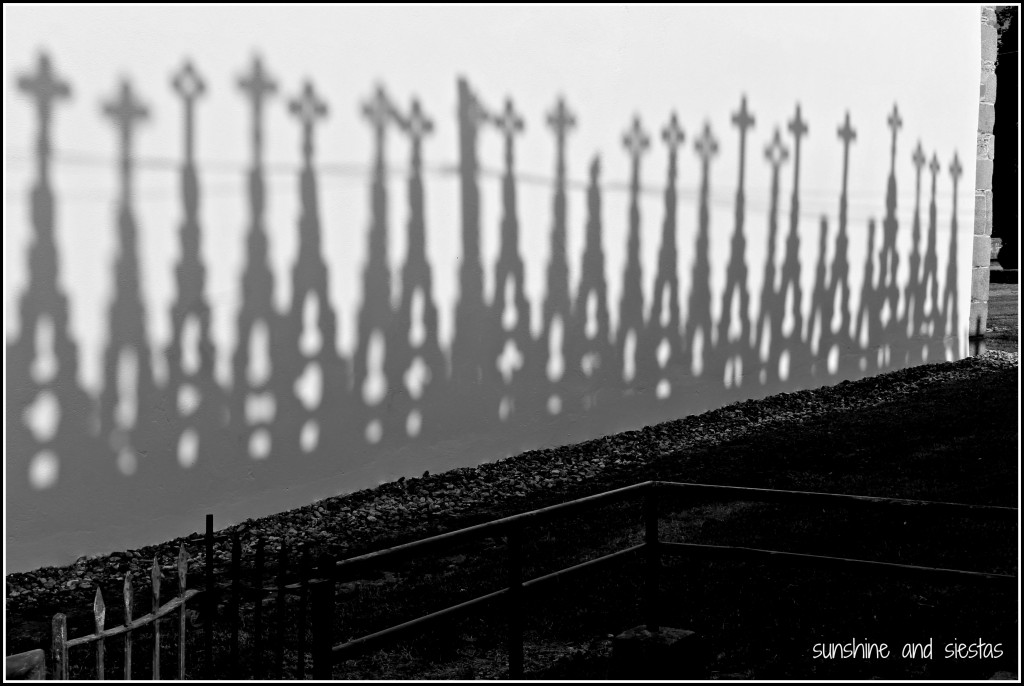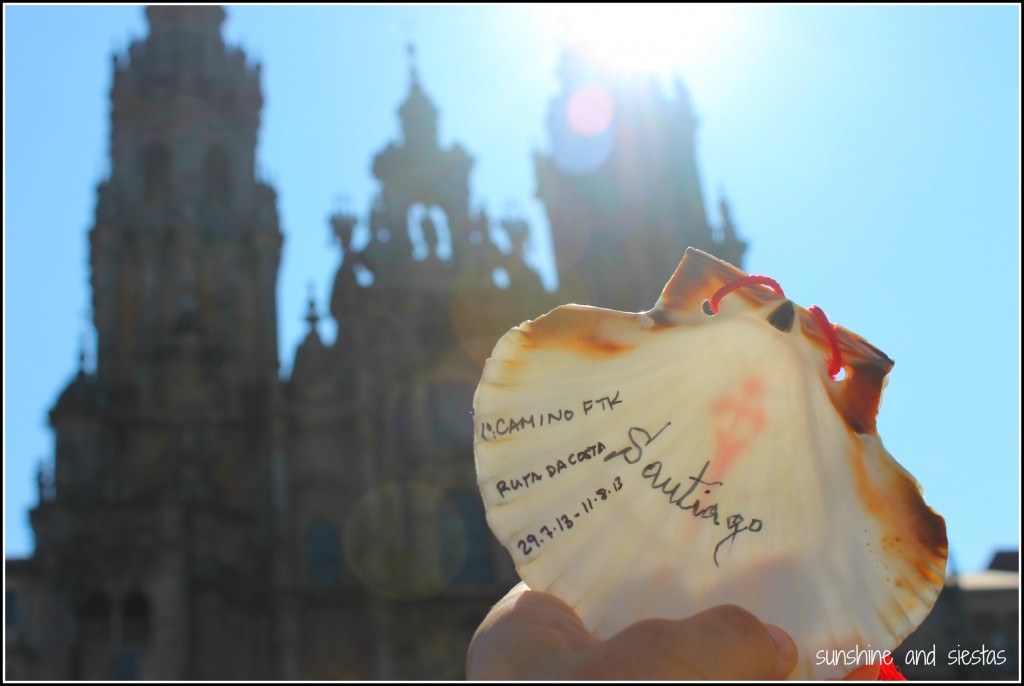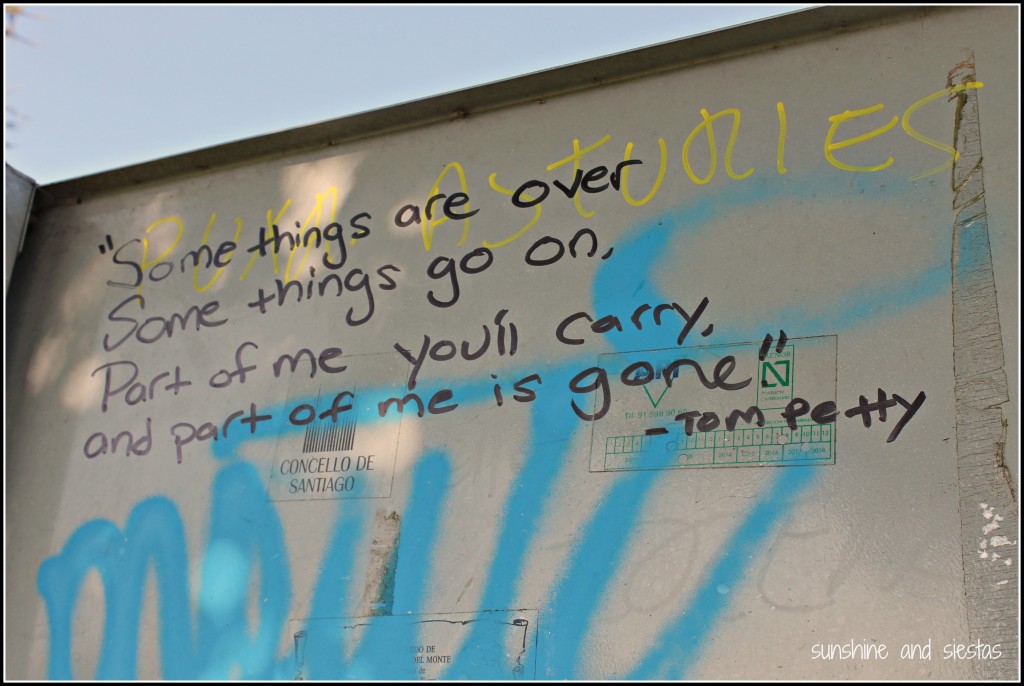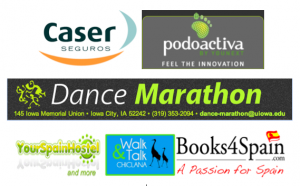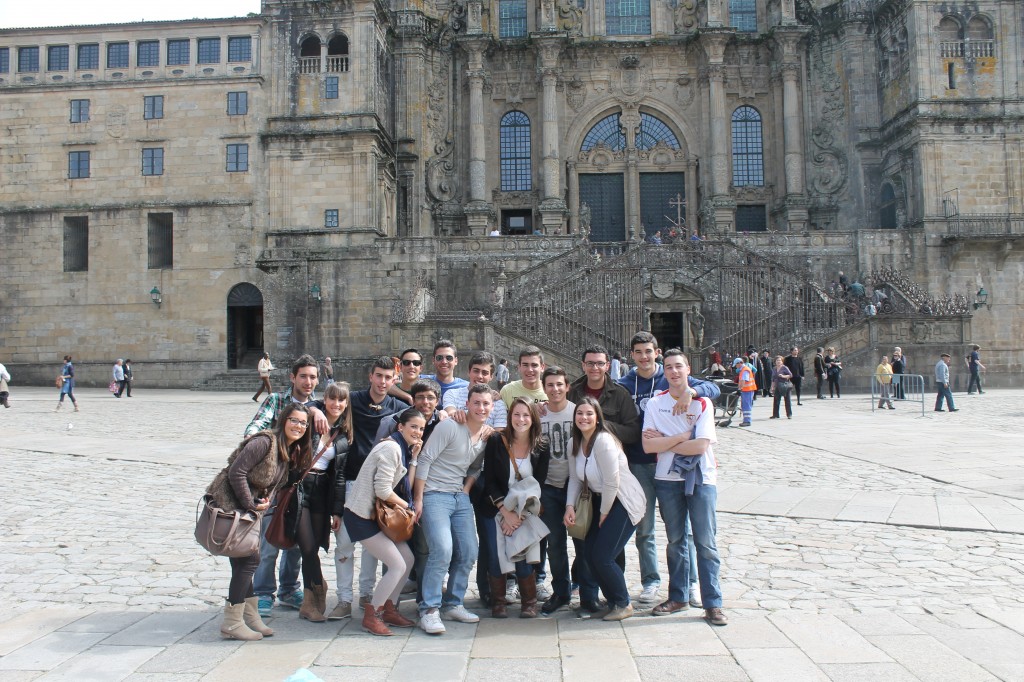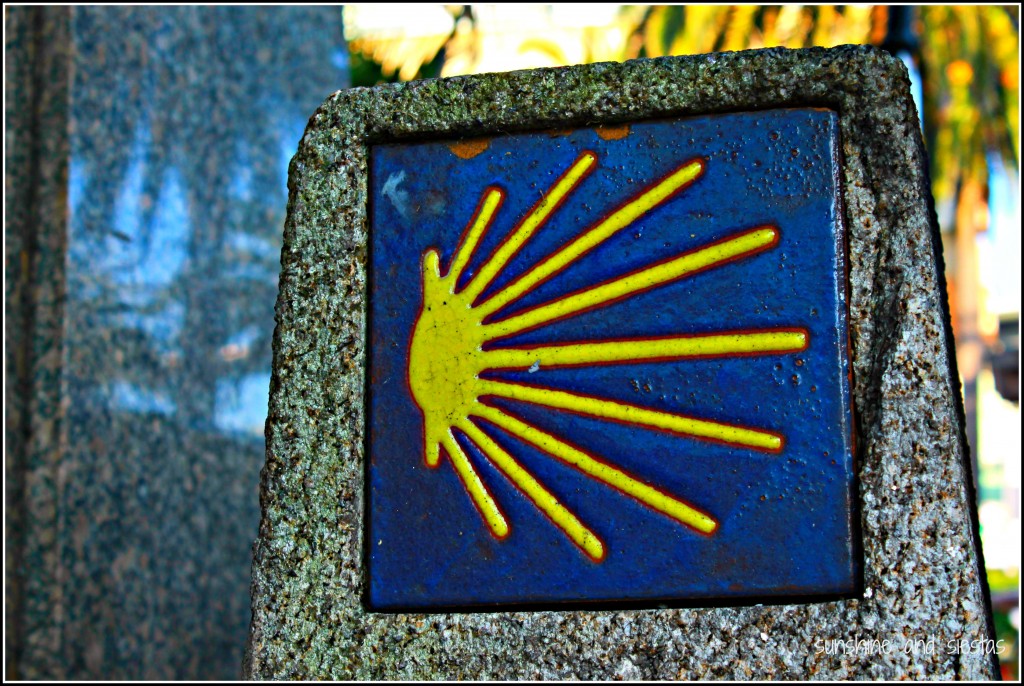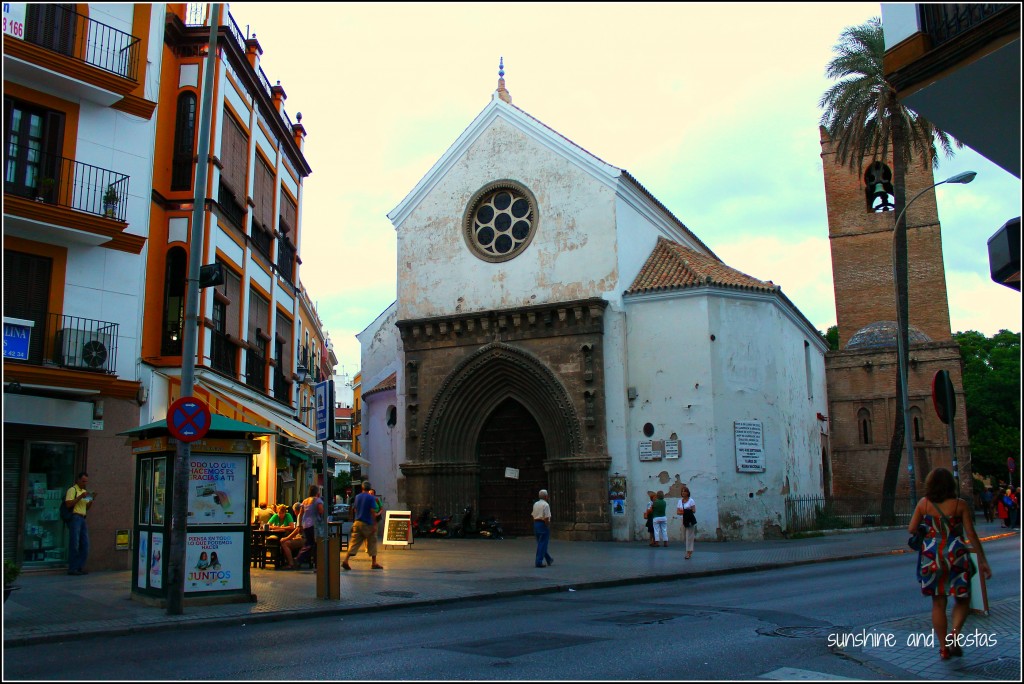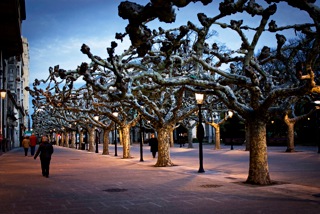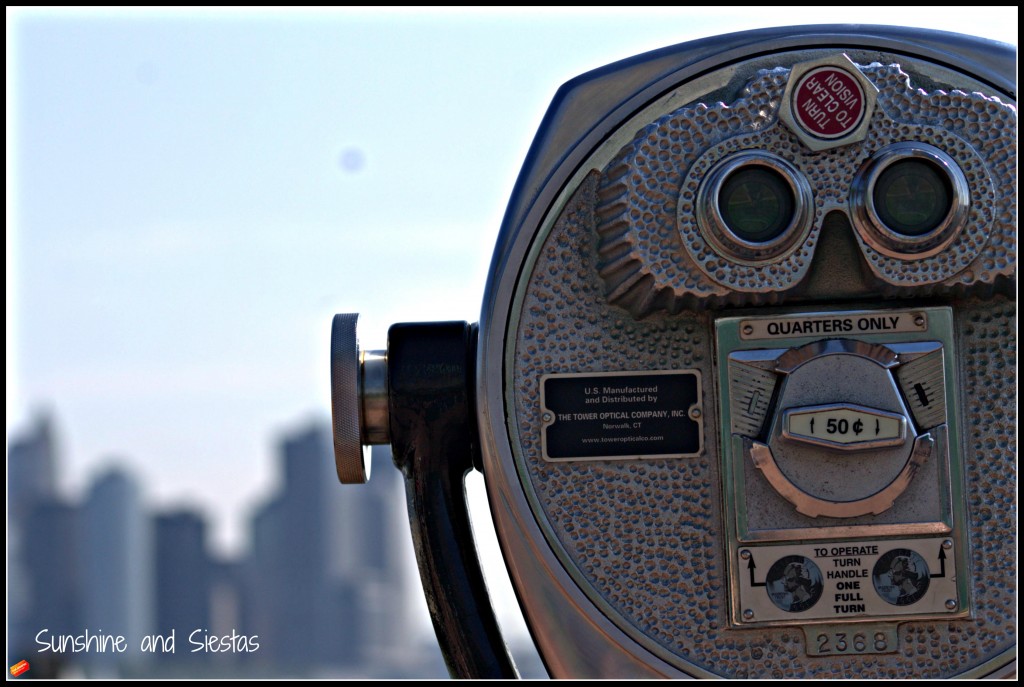Death is about as taboo a subject as they come. As my cousin Christyn and I tried to mask our fear the last time we talked to Pa, seated on the futon, it was as if the proverbial White Elephant had come and wedged itself in between us.
As my days living in Spain have stretched on to nearly seven years, there has always been a little voice in the back of my head that has reminded me that there are things I’ve given up. While some are trivial, my heart sometimes hurts when I miss weddings, babies and other defining life events.
And believe me, it weighs on my expat mind nearly every day.
—
Back in November, by dad delivered the news I had been dreading since boarding a Spain-bound plane: my grandparents needed assisted living. My grandmother had been diagnosed with Alzheimer’s and could no longer look after herself or the man she’d cared for during 63 years of marriage. She’d forget to give him his medicine for a weak heart, or not feed him.
I decided to turn down my summer camp position to spend time with my family back in Chicago during my summer holidays. It wasn’t a hard decision in the end – not for money, and not for experience.
I lost my maternal grandmother to cancer at age 9, my maternal grandfather to a hit-and-run at age 19 and was facing losing my remaining grandparents – one in body and one in mind – at 29.
—
My grandfather, Don Gaa, Sr., was a man of few words. He loved working with his hands, sitting with his feet up and playing jokes on us. As my dad, who took the same name as his father, summed up a simple man who grew up in Nebraska during the Dust Bowl as he gave the eulogy: “You could tell how much Don loved you by how much he teased you.” His winks and sly smile were words enough.
When I said goodbye to him over the phone about 48 hours before he passed, I could feel his smile through the phone. It’s hard to be serious and tell someone you love them and will always remember them when you burst out laughing every time you think of him and his sly little smile.
—
Christyn slung her bag on her back and gave me a hug. I reminded her to call her dad that afternoon. Christyn is a nurse in Germany and had explained Pa’s condition, his decision to withdraw care and get hospice care. He was as stubborn as they come, and he wanted to go in peace.
As I unlocked the door to work that day, I got a frantic whatsapp in capital letters from my mother: CALL ME IMMEDIATELY FOR PA. I fumbled with the keys, tears flooding my eyes, as I struggled to tap out a response. “Is it really that bad?”
“Yes. <3 <3 <3”
I paced the corridor of the academy, trying to compose myself before the other teachers arrived. I decided to stay mum, not wanting to cause an avalanche of tears and blubbering and ugly cry onto people with whom I had a professional relationship. But this is life, and life sometimes sucks, and crying makes me feel better.
As soon as my secretary came in, I crawled into her lap and sobbed.
—
My boss allowed me to take a walk between my classes to clear my head. I had to work up the courage to call my Uncle Bill, who was at the hospital with my grandfather as he waited to be moved. My grandfather has been deaf for as long as I can remember, so I probably looked like a psycho walking around Barrio de la Calzada with sunglasses on and shouting into my cell phone in English. Pa was on a feeding tube and the muscles in his esophagus had all but stopped trying, so I talked at him as I always did as the bubbly granddaughter.
After moving to Spain, he always pretended I was speaking to him in Spanish before I’d give him a nudge and he’d envelop me in a hug. I knew I probably wouldn’t speak to him again, so I told him two important things: that I was fortunate to have him in my life for nearly 29 years and that goodbye is a word that is often replaced with “hasta luego.” It felt final but not final to send him off that way.
“He’s smiling, Catherine. I think he wants to tell you that,” Uncle Bill said before we hung up.
I continued to walk around the neighborhood for 10 minutes before happening upon a donut shop. I forked out a euro to drown my sadness in chocolate and sugar. It made me feel better.
—
That night, I hardly slept, checking my phone every few hours for an update on Pa. Nothing came. I awoke groggy and grief-stricken, and decided going home would be too much emotional strain on me. I didn’t send any messages to family, inquiring about how the move to the retirement village had gone or how the old man was holding up.
I collapsed into bed that night, right after work, and slept soundly.
—
The next day was a whole different story. I woke up and checked prices for a Madrid-Chicago trip. I texted my mom to tell her I wanted to come home, if only to see Pa once more and tell him I love him. I asked my boss to ask about a week-long leave of absence. Being a spiritual person, she immediately agreed and offered to take over my classes and speak with lawyers about the legal ramifications of missing four days of work.
Pay deducation or not, I had promised my grandmother I’d be at her funeral, and now that she was on the verge of being a widow, I felt it was my duty. And I wanted to.
—
My dad called just after midnight. I had already chosen flights and just wanted to run my travel plans by him so I wouldn’t be stuck at Midway with a non-functioning phone and no one to take me for an all-beef hotdog.
“Yeah, Pa just passed away about 45 minutes ago,” were his first words to me. My grandfather had slipped into a coma on Tuesday night, received last rites twice and my grandmother and my father’s two youngest boys were with him when his heart decided that enough was enough.
I was sorry, but at the same time, relieved. When someone whose health is poor suffers and who had lived to nearly 86 dies, there’s always a moment of grief and of loss, but it dissipates quicker than I had imagined it would. My dad had lost his first parent at 62, whereas my mother was an orphan by 47. I cried quietly, but nothing compared to Monday’s bawlfest with MariJo.
Somehow, I pulled it together to book a Delta flight, a train ticket to Madrid and a hotel in Barajas, then planned my classes for the following week. I slept like a zombie, relieved that I wouldn’t be racing against the clock to see Pa before he passed. In fact, I was relieved.
The following morning, the Novio took the day off of work to help me prepare for my trip. Rather than being sad, he told me all of the memories he had of meeting Don, Sr. in Chicago and Arizona. I laughed as we had a morning beer while the other abuelitos around us drank their coffee.
“Your ‘grampy’ was the funniest man,” he said, recalling a time where he had teased my mother and her sweet tooth with a little wink.
He really was the funniest man.
—
My sister greeted me at my gate with a beer in hand. She and Pa had always been close, as I was the proclaimed favorite of his wife, and Pa gave everyone else all the love that Grammie gave me. “I wish we were seeing each other under different circumstances, but it’s really freaking good to see you,” she said. There was no culture shock whatsoever (my guess is from frayed nerves, a three-hour delay out of Atlanta and the fact that my trip was so last-minute).
I was beyond tired – both mentally and physically – but happy with the decision to come home.
As I plopped down I my bed, something poked my upper back: a wooden bull that my grandpa had carved for me the summer before. It went straight into suitcase to be carried back to Spain.
—
On Saturday afternoon, we set off to my grandparents’s house near the Illinois-Wisconsin border. The Gaas had moved in to that house on David street just after they married, and before my father was born. To me, it’s the house where many of my childhood memories were formed.
My dad’s brothers and their wives were there, as well as my grandmother, who looked frail but stoically did not cry. My arrival from Spain took center stage (I had not been home in nearly two years), and I suddenly felt elated to be with my family. We pulled out the photo albums my grandmother had kept since her marriage in 1950. There were no tears, just laughter and memories and trying to find the fake poop he’d hid amongst our Christmas presents.
—
“Do you think you could get married in October? That would be a nice month.” My grandmother held on to me as we passed a picture of her wedding day. I’d told her that we wanted to do a ceremony in the US, and her face changed. She was so happy that the funeral home had done a great job of making Pa look like Pa, and I even said I think he had a slight smirk on his face.
She was as stoic as a widow can be during the wake, and was so delighted to see so many friends come out. My Pa loved little kids, and when all of my second cousins came with their babies at once, Grammie’s mood changed. Keri’s daughter ran up to the casket and poked Pa, then ran away, giggling as if Pa were actually chasing his only great-granddaughter.
For four hours, I played catch up with all of my extended family. The last time I had seen them was for Thomas’s wedding in Boston two years ago, and despite the circumstances, we all laughed and hugged and ate and rejoiced at being together again. “You definitely win the award for furthest traveled!” Uncle Mark quipped.
When we went home that night, I fell asleep, wrecked by a non-stop week of travel and emotional distress and jet lag. The following day, we would bury Pa in Antioch, just a stone’s throw from the house he had lived in with his family.
—
The funeral was sad, as funerals tend to be. I cried alongside my sister, but was able to read a passage I’d selected from the Book of Wisdom about eternal life without cracking into ugly cry or even a sniffle. My voice echoed in my ears, and the tears came as soon as I’d finished.
At the funeral, we said goodbye to Pa one by one as we touched the casket. I repeated my words: hasta luego.
—
I walked to lunch with my dad. I’ve only seen him cry twice to date – when my mom’s parents died – and is mind is already switched to ‘Irish Funeral’ setting. Even though my grandfather was German, he played up my grandmother’s love of the motherland, often donning green and marching with us in Irish parades on March 17th.
Beers in hand, we took turns telling stories about my Pa: his best friend Joe was with him when they picked up two Chicago broads hitchhiking to Wisconsin and ended up married to them, moving next door to one another on David Street. The elation when my cousin Brian, the only male cousin, was finally given the honor of carrying on the family name. The hat collection he kept when he semiretired from owning a grocery store to work as a mechanic at Great America.
My favorite? Pa told my great aunt Anne that he’d wink at her when he was lying in a coffin. But of course he would.
When it was my turn, I kneeled on a barstool and recounted the words the Novio had told me after meeting Pa for the first time. “Your dad is a great man, Puppy, but I want to be just like your grampy.”
—
“When I die, please have fun remembering me.” Don Gaa, Jr. and I were leaning against the car hood at the Dairy Queen in Mundelein. We were somber, yet I felt better knowing that we’d laughed just as much as we’d cried at the funeral. Even my grandmother seemed determined to start making friends at the retirement home.
I’ve often felt guilt at being so far away from home, and it had never burned so much as in that span of days at home. There was talk about long-term healthcare, of cashing bonds and of who would get what. Most fell to my sister, including being the executor of the will, “only because she lives here.”
I left the US the following morning after a third hot dog lunch with my dad. I suddenly felt this weird urge to get married and start a family so I wouldn’t be depriving anyone of anything. It was a topic that came up countless times in those days, and it really lit the fire under my culo.
—
I don’t think my grandma will take too long to go. After more than six decades with my grandpa, she’s left with ever-fading memories. My heart hurts thinking about the grief she must feel, about how lonely she likely is. But how much would I give up here to be there? Is there any way to still straddle the Charca? To be present in two places?
The truth is, I wouldn’t if I could. I’m too independent, and maybe that makes me selfish. The best I can do is promise to be there when it counts.
Have you ever dealt with death or loss on your travels?


